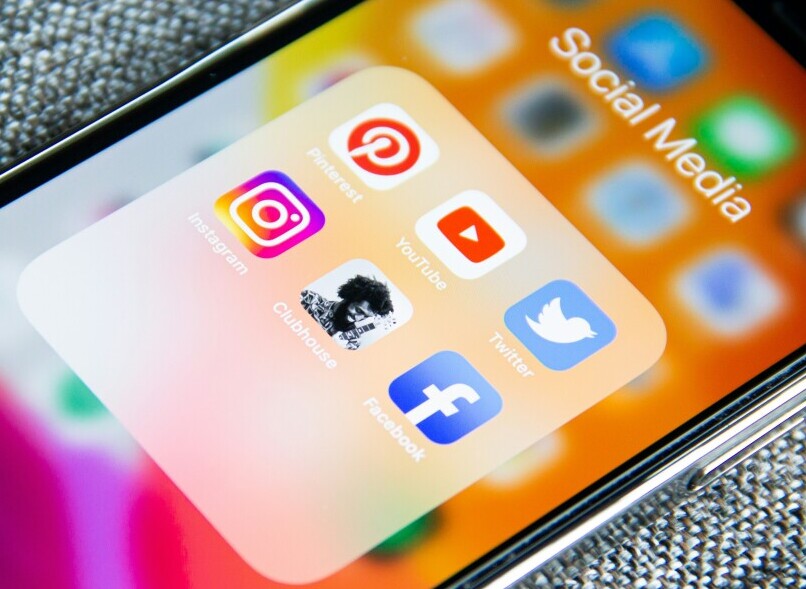I have experimented with posting on several social media platforms over the years, hoping to see growth, engagement, and new opportunities. With each post, I’ve noticed that most of my content gets less than ten impressions, even after putting in a lot of thought and effort. I started questioning if all the time spent on social media marketing is worth it. In this article, I explain why I think social media marketing is a complete waste of time, based on my own experience and the realities that come with trying to build a presence online.
![]()
Why Social Media Marketing Looks Good on Paper but Rarely Delivers
I started social media marketing hoping to grow my audience and attract more attention to my work. The process seems really straightforward. You find the right platform, create content, post regularly, then watch numbers and comments roll in. What I actually discovered is a different story. On most posts, impressions are counted in single digits.
Social media platforms show off big numbers when talking about monthly users or content that “goes viral.” For most people like myself, none of that is the daily reality. Algorithms place heavy emphasis on trending content, advertising, and paid promotions. I noticed that if I didn’t pay for ads or boost my posts, almost nobody saw what I shared. My organic reach kept shrinking as platforms gently push users into spending money to get their content seen.
Big brands and influencers may get millions of views, but for someone starting out, social media is a really crowded place. My friends, family, and a handful of bots were the most likely to see my content. With so many people posting, getting noticed felt more like luck than a result of any planning or strategy.
If you do a quick search, you’ll stumble upon case studies showing eye-catching statistics about brands that let it rip on social, racking up big numbers. But when you’re just starting out, it often feels like you’re invisible. The gap between these success stories and the quiet reality for most users is even wider than you might expect.
Common Myths About Social Media Marketing That Mislead Beginners
Many blogs and gurus claim that social media is the fast lane to growing a business, building a personal brand, or landing clients. I found that much of this advice misses key points. Here are some popular myths that affected my experience:
- “Post Consistently for Fast Results: I posted daily for weeks without seeing any real jump in followers or engagement. The idea that consistency alone leads to success isn’t true if almost nobody sees your posts.
- “Quality Content Gets Noticed: I worked hard to make every post look good and add value. Even my best posts sometimes got zero comments or just a thumbs up from my sibling. On crowded platforms, quality doesn’t guarantee your content will surface.
- “It’s a Free and Effective Way to Advertise: Most social platforms limit the reach of unpaid posts. My experience showed me organic traffic is so limited that only paid advertising stands out.
- “Audience Will Find You If You Use Hashtags: I researched hashtags, mixed popular and niche tags, and still got very little attention. Algorithms favor content that already has traction or comes from established accounts.
The supposed all-in-one recipe for social media growth doesn’t hold up when you try to put it to work. Each tip sounds good in theory but just falls flat if the algorithm isn’t on your side. Many newcomers get frustrated when they realize there’s no easy fix or guaranteed path to going viral, contrary to what popular advice would have you believe.
The Real Costs of Social Media Marketing

The biggest expense is time. I found myself spending hours brainstorming content, designing graphics, editing videos, and scheduling posts. Most of that effort resulted in posts that received only a handful of impressions.
Besides time, there’s also the emotional cost of disappointment. Getting practically no feedback over weeks or months made me question my efforts and my approach. Often, posting became more of a chore than something enjoyable. The constant comparison with accounts that do better easily chips away at motivation.
There are also hidden financial costs. Many features that boost visibility, like scheduling tools or analytics dashboards, often come with a monthly fee. When I experimented with promoting posts, I saw minor bumps in numbers, but those vanished once the promotion period ended.
Over time, chasing success on these platforms didn’t just affect my productivity. It started to wear down my confidence and made me rethink what “success” looked like. I realized that the actual return just didn’t line up with everything I was giving up in terms of energy and enthusiasm. Friends who burn out from endless posting cycles often echo the same sentiment—what do you really have to show for it at the end?
Why Organic Reach Is Practically Nonexistent for Most Accounts
Back when I first joined social media, posts reached a bigger share of my friend list or followers. Now, major platforms make money by limiting organic reach and encouraging users to pay for exposure. Most of my content struggles to break out of a “shadowbox” that only includes people who already know me.
This isn’t just my experience. Reports from social media analysts and case studies repeatedly point out that organic reach rates have dropped to below 5% for business pages on platforms like Facebook. That means if I have 100 followers, maybe 5 will even see my post. For someone starting with fewer followers, those odds feel even worse.
When algorithms are designed to keep people scrolling by feeding them viral and sponsored content, most average posts get left behind. Unless I pay for ads or already have a big audience, my posts are lost in the crowd.
With all this in mind, is it any wonder most people feel invisible? If you want your hard work to reach more than a tiny handful, it’s basically pay to play. And even then, results can be lackluster—any bump in reach or impressions quickly disappears once you stop spending money.
Chasing Vanity Metrics and Getting Nowhere
I quickly noticed that most advice about social media focuses on numbers: likes, shares, comments, or followers. I spent months chasing these vanity metrics and saw very little change in opportunities for my business or personal growth.
When I hit a milestone in followers, my engagement numbers stayed mostly the same. Brands and potential clients never reached out. The illusion of progress doesn’t mean much if there’s no real-world value behind those metrics.
I learned the hard way that bigger numbers don’t lead to sales, connections, or meaningful conversations if my content doesn’t reach the right people, or any people at all. Vanity metrics give people a quick high, but rarely translate into something meaningful. It’s frustrating to realize that attention—when you can even get it—stays fleeting and disconnected from your real goals. Chasing validation through numbers can turn your creative ride into a numbers game that ultimately feels empty.
What Actually Gets Results in Digital Marketing (Spoiler: Not Social Media)
After spending so much energy on platforms with almost no traction, I started putting effort into other areas. Building a website, writing blog posts, and working on SEO brought in more steady visitors and better conversations than any social post I made.
Email marketing also worked better for me. When people joined my list, they were more likely to get involved, reply, and even become clients. Unlike social media, email gave me direct access to my audience rather than relying on algorithms.
Focusing on valuable, long-lasting content like how-to guides, reviews, or tutorials led to higher engagement and visibility. This approach rewards effort over time, while social posts usually disappear in days or even hours.
For example, a blog post I wrote months ago continues to bring in visitors and even sparks conversation and sales proofs—something no single social post could achieve. Email newsletters let you build genuine relationships and give a boost to repeat visits. Compared to social platforms, these channels offer more control and a clearer payoff.
Challenges That Make Social Media Marketing Frustrating (with Solutions that Didn’t Work for Me)
- Low Visibility: No matter how well I optimized my posts or timed the release, most updates barely reached my own followers.
- Content Burnout: Keeping up with trends, shooting videos, and posting stories left me feeling tired instead of inspired.
- Algorithm Changes: Every time a platform changed its rules or interface, I saw engagement drop, even with the same type of content.
- No Control Over Audience: Platforms decide who sees what, so I had no real way to reach new people without paying.
Low Visibility
Low visibility was my single biggest frustration. Experiments with different types of content, wording, images, and hashtags made almost no difference. I felt like I was talking to myself in an empty room. Even following trending topics did not push my reach past the same small circle.
Content Burnout

Trying to match the pace set by bigger accounts takes a lot of effort and time. Within a few weeks of daily posts, I was already feeling drained and out of ideas, with nothing to show for my work.
Algorithm Changes
Social media platforms regularly change how they show content to users. Each update reset what little growth I made, which turned into a cycle of guesswork and disappointment.
No Control Over Audience
Unlike a website or an email list, I realized I had no say in who actually received my posts. When I wanted to share work with a new audience, I hit wall after wall unless I paid for ads.
From my experience, social media marketing is more hype than substance for most people. If you’re getting less than ten impressions on your posts, know you’re not alone. Exploring other marketing paths like blogs, SEO, and email gave me a greater return for the effort I put in. Social media platforms may promise big results, but my results say otherwise. The next time you’re tempted to double down on posting, maybe take a step back and check out what other digital channels have to offer. You might be surprised which ones actually give you a boost.







This was a bold and thought-provoking take! While most people seem to treat social media marketing as essential, it’s refreshing to see someone challenge that assumption.
One question I had: do you think certain niches or industries are more prone to wasting time on social platforms than others? For example, would an author or a coach see less ROI compared to an eCommerce brand?
Also, in your experience, are there specific signs that someone should step back from social media marketing and refocus their efforts elsewhere?
Appreciate the alternative perspective—it definitely got me rethinking how I spend my time online.
I think social media marketing for all my posts are a waste of time as I check the stats on the social media platform and they are less than 10 pageviews per month.